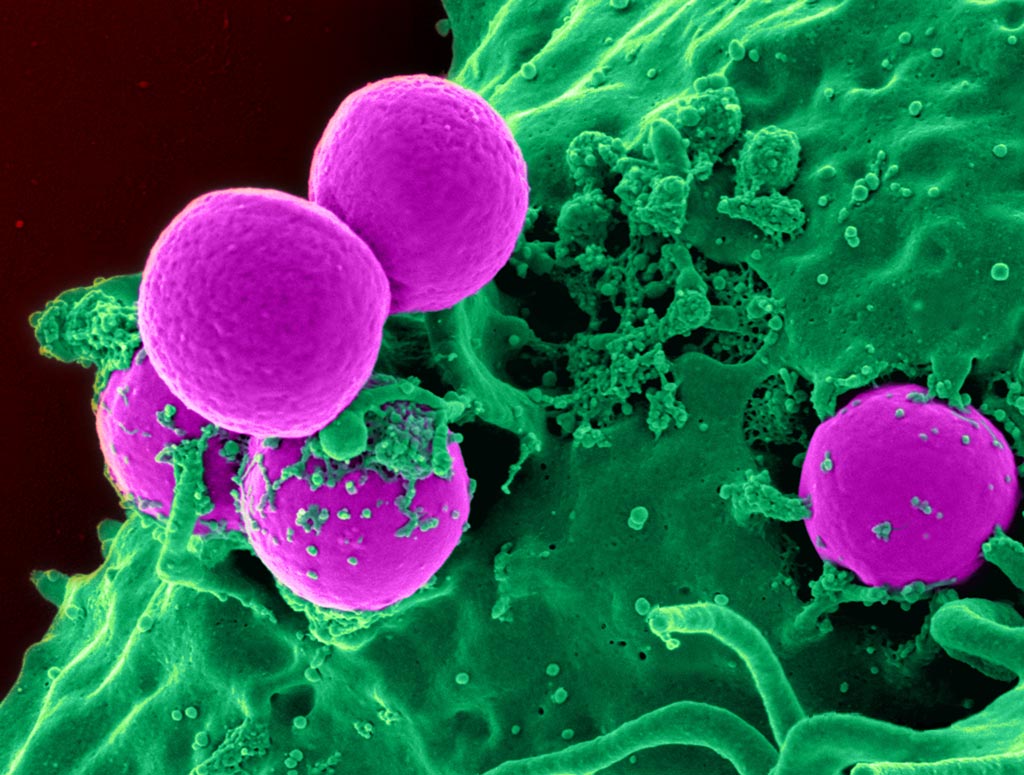Synthetic Compound Acts As Potent MRSA Killer
By LabMedica International staff writers
Posted on 11 Jun 2018
A synthetic compound based on lipoxazolidinone A, a small molecule isolated from bacteria living in marine sediments, was found to be a potent anti-microbial agent especially against drug-resistant bacteria such as Methicillin-resistant Staphylococcus aureus (MRSA).Posted on 11 Jun 2018
The lipoxazolidinone family of marine natural products, with an unusual 4-oxazolidinone heterocycle at their core, represents a new scaffold for antimicrobial discovery; however, questions regarding their mechanism of action and high lipophilicity have been responsible for delaying follow-up studies.

Image: A scanning electron micrograph (SEM) of a human neutrophil ingesting MRSA bacteria (Photo courtesy of the U.S. National Institute of Allergy and Infectious Diseases).
To avoid these problem features, investigators at North Carolina State University (Raleigh, USA) synthesized JJM-35, an analogue of lipoxazolidinone A with enhanced activity against Gram-positive bacteria.
The investigators reported in the May 29, 2018, online edition of the journal Angewandte Chemie that when JJM-35 was used to treat a panel of drug resistant and non-resistant bacteria JJM-35 proved to be up to 50 times more effective than the natural product against several bacterial strains. Furthermore, JJM-35 was often more effective against resistant bacterial strains than it was against nonresistant strains.
"At this point, we have a chemical scaffold - a starting piece of the puzzle. We know that this piece is effective, and so right now all efforts are focused on evaluating the properties of these molecules and their in-vivo efficacy," said senior author Dr. Joshua Pierce, assistant professor of chemistry at North Carolina State University. "The hope is that we can build upon this scaffold to create drugs that are effective against MRSA and other resistant bacteria at a time of dire need for antimicrobial development while also increasing the spectrum of activity. An exciting additional aspect of this work was that we identified that these molecules may function by inhibiting multiple biosynthetic pathways directly or indirectly. This means that bacteria may have difficulty developing resistance to potential drugs developed from these molecules."
Related Links:
North Carolina State University














